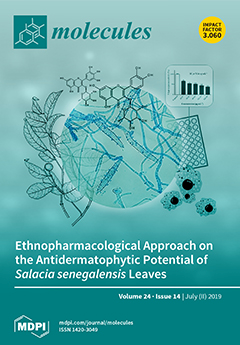A method for the simultaneous analysis of amoxicillin (AMO), amoxicillin metabolites, and ampicillin residues in edible chicken muscle, liver, and kidney samples via high-performance liquid chromatography-electrospray ionization tandem mass spectrometry (HPLC-ESI/MS/MS) was developed and verified. The extraction and purification procedures involved the extraction
[...] Read more.
A method for the simultaneous analysis of amoxicillin (AMO), amoxicillin metabolites, and ampicillin residues in edible chicken muscle, liver, and kidney samples via high-performance liquid chromatography-electrospray ionization tandem mass spectrometry (HPLC-ESI/MS/MS) was developed and verified. The extraction and purification procedures involved the extraction of the sample using a liquid-liquid extraction method with acetonitrile to eliminate the proteins. The chicken tissue extract was then injected directly onto an HPLC column coupled to a mass spectrometer with an ESI(+) source. The HPLC-ESI/MS/MS method was validated according to specificity, sensitivity, linearity, matrix effects, precision, accuracy, decision limit, detection capability, and stability, as defined by the European Union and Food and Drug Administration. The linearity was desirable, and the determination coefficients (r
2 values) ranged from 0.9968 and 0.9999. The limits of detection and limits of quantification were 0.10–2.20 μg/kg and 0.30–8.50 μg/kg, respectively. The decision limits were 57.71–61.25 μg/kg, and the detection capabilities were 65.41–72.50 μg/kg, and the recoveries of the four target analytes exceeded 75% at the limits of quantification and exceeded 83% at 25, 50, and 100 μg/kg (
n = 6 at each level), confirming the reliability of this method for determining these analytes and providing a new detection technology. For real sample analysis, this experiment tested 30 chicken tissue samples, only one chicken muscle, liver, and kidney sample were contaminated with 5.20, 17.45, and 7.33 μg/kg of AMO values, respectively, while other target compounds were not detected in the 30 tested chicken tissue samples.
Full article






